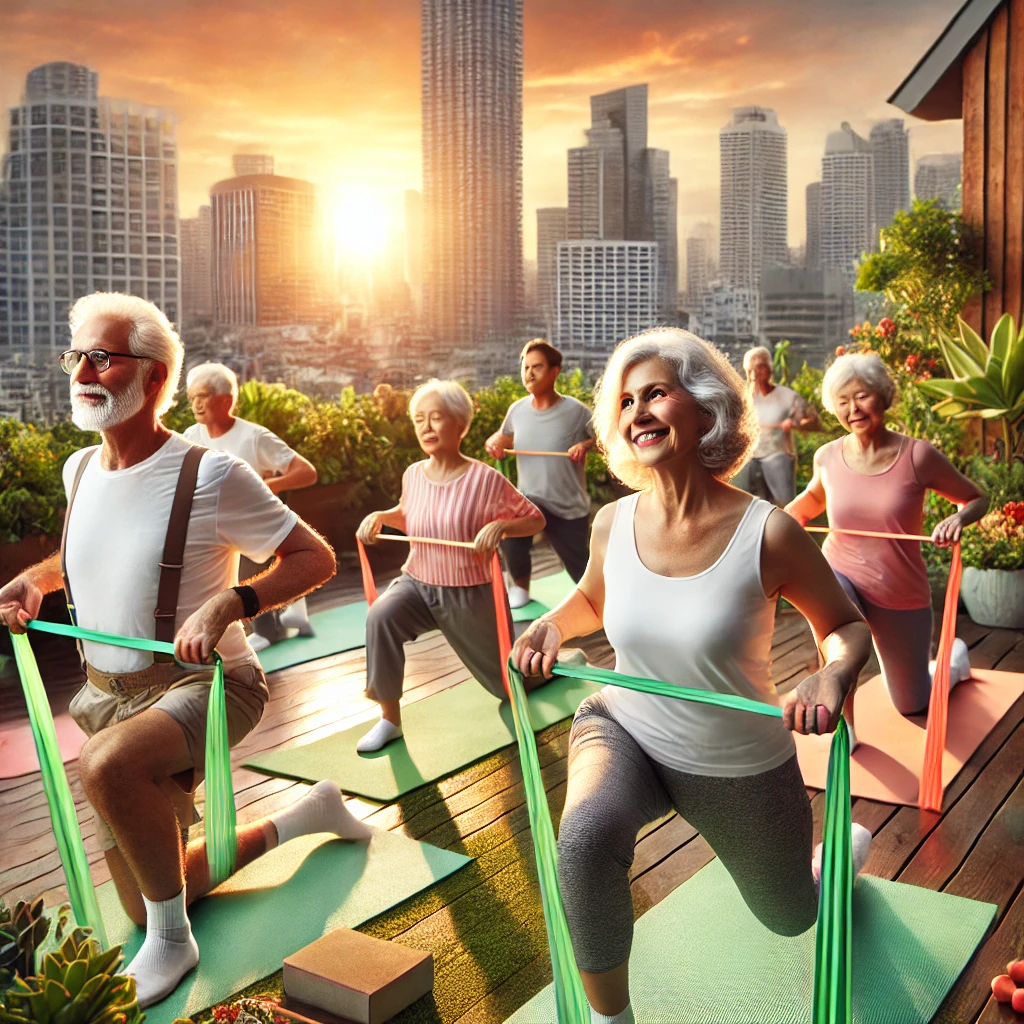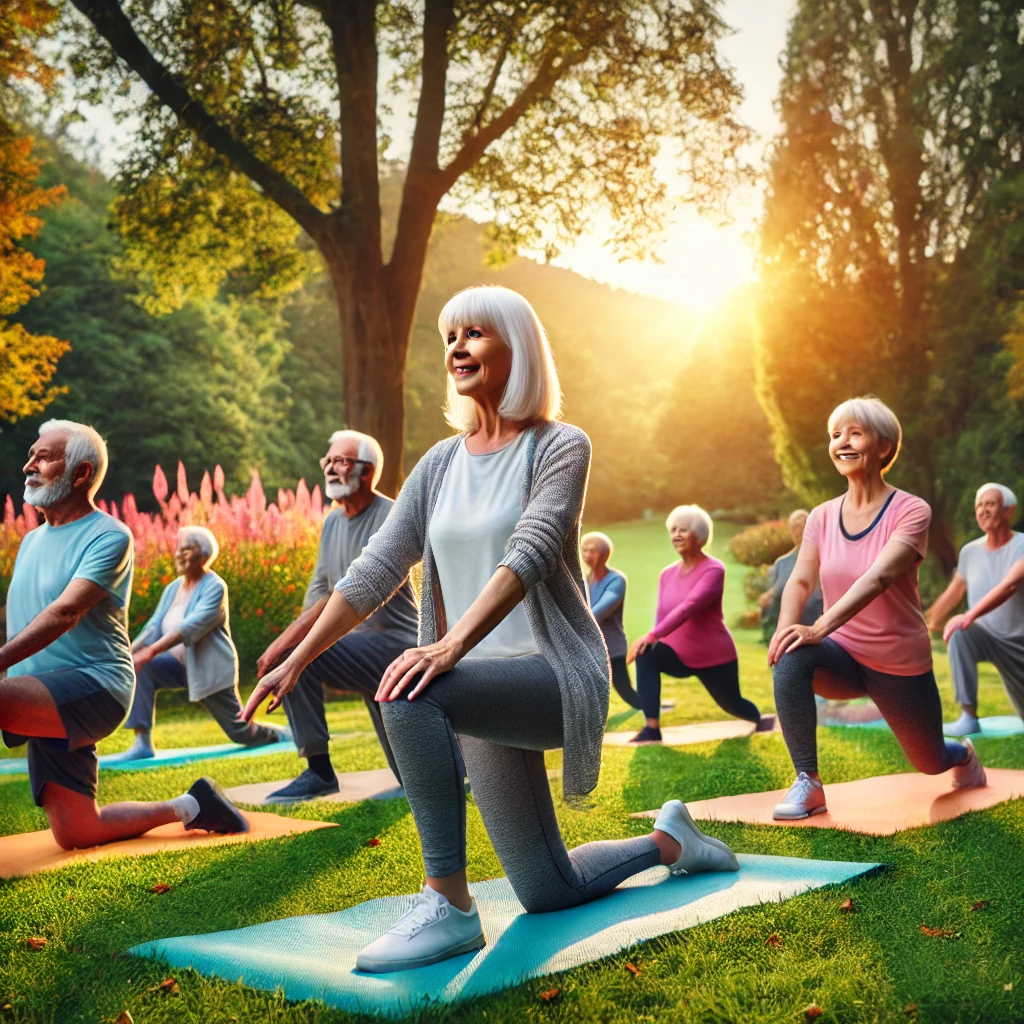Table of Contents
The Importance of Staying Active in Later Life
As individuals enter their golden years, maintaining an active lifestyle becomes increasingly essential. Engaging in regular physical activity offers a myriad of benefits that extend beyond mere physical health. For seniors, staying active is pivotal in mitigating age-related health conditions such as heart disease, obesity, osteoporosis, and cognitive decline. Studies have consistently demonstrated that seniors who participate in regular exercise are more likely to enjoy longer, healthier lives.
Physical health improvements that result from regular exercise are profound. According to research from the World Health Organization, seniors who engage in moderate aerobic activity for at least 150 minutes per week significantly reduce their risks of chronic diseases. Exercise can enhance cardiovascular fitness, strengthen muscles, and maintain flexibility—key factors that contribute to mobility and independence in later life. This improved physical health not only benefits seniors individually but also has a ripple effect on their overall quality of life.

Mental well-being is another critical aspect of staying active in later years. Regular physical activity has been linked to lower levels of depression and anxiety among seniors, leading to improved mood and cognitive function. Engaging in exercise promotes the release of endorphins, substances in the brain that act as natural painkillers and mood elevators. Additionally, social interaction—often a component of group exercise classes—can help combat loneliness and foster community connections, a vital aspect for emotional health.
While the myriad benefits of staying active are clear, it is important to recognize that seniors’ exercise plans should be tailored to their unique needs and limitations. Personalized exercise plans account for individual health conditions, mobility levels, and personal preferences. Such well-structured activity regimens ensure safety while maximizing the benefits. In conclusion, embracing an active lifestyle through specialized exercise plans is invaluable for seniors, significantly contributing to their physical health, mental well-being, and overall quality of life.
Understanding the Unique Needs of Seniors
As individuals age, they experience a variety of physical and mental changes that can significantly influence their exercise needs. These changes may include a reduction in muscle mass, decreased bone density, and flexibility issues, which can hinder mobility and increase the risk of falls. Additionally, mental health concerns, such as cognitive decline and depression, may also emerge, necessitating specific attention when designing exercise programs for seniors. It is essential to acknowledge that many older adults contend with common health issues, such as arthritis, balance problems, and chronic conditions like heart disease or diabetes. These factors underscore the necessity of tailored exercise plans that cater to the unique needs and capabilities of seniors while promoting safety and effectiveness.
Arthritis, a prevalent condition affecting many older adults, can lead to joint pain and stiffness, making traditional exercise challenging. Therefore, low-impact activities like swimming or yoga are often recommended, as they minimize stress on the joints while promoting flexibility and strength. Similarly, balance-related problems must be addressed through exercises that enhance stability, thereby reducing the likelihood of falls. These could include strength training and activities that focus on coordination, such as tai chi.
To ensure the exercise plans are suitable, it is crucial for seniors to consult healthcare professionals, such as physicians or physical therapists, before commencing any fitness regimen. These experts can assist in identifying safe and effective exercises tailored to individual skill levels and health conditions. Furthermore, they can evaluate any existing medical issues that should be considered when developing a personalized exercise plan. In doing so, seniors can engage in physical activities that not only promote their overall health but also improve their quality of life, ultimately enabling them to stay active in their golden years.
Types of Exercise for Seniors: Finding the Right Fit
As individuals age, maintaining physical activity becomes crucial for promoting overall health and well-being. Different types of exercise can cater to the varying capabilities and preferences of seniors, ensuring they find a suitable and enjoyable way to stay active. Understanding the primary categories of exercise can help seniors create a balanced workout plan.
Aerobic activities are essential for cardiovascular health and endurance. These exercises can range from low-impact pursuits, such as walking or swimming, to more engaging options like dancing or cycling. Engaging in 150 minutes of moderate-intensity aerobic activity each week helps improve heart health and can be easily incorporated into daily routines. For instance, seniors might consider joining a local walking group or attending community dance classes that promote social interaction as well as physical activity.
Strength training is another vital component of an exercise regimen for seniors. This type of exercise helps combat muscle loss and improve bone density. Resistance training can include simple bodyweight exercises like squats, lunges, and push-ups, or the use of light weights and resistance bands. Incorporating these activities two to three times a week can significantly enhance functional ability and overall strength, making day-to-day tasks easier and safer.
Flexibility exercises and balance training are also crucial for mobility and fall prevention. Activities such as yoga or tai chi not only improve flexibility but also enhance balance, coordination, and mindfulness. Seniors can easily find classes specifically designed for their age group, allowing them to enjoy these exercises in a supportive environment.
Ultimately, the key to staying active in golden years is integrating fun and enjoyment into the exercise routine. Finding group classes, joining walking clubs, or participating in community events can foster motivation and commitment, making fitness an enjoyable aspect of daily life.
Creating and Maintaining a Personalized Exercise Plan
Developing a tailored exercise plan for seniors is essential for maintaining physical health and overall well-being. The first step in this process is to set realistic and achievable fitness goals. These objectives should be specific, measurable, attainable, relevant, and time-bound (SMART). For instance, instead of saying, “I want to be fit,” a more realistic goal would be, “I want to walk for 30 minutes three times a week by the end of next month.” This specificity not only provides direction but also allows for easier tracking of progress.
Tracking progress is critical in recognizing achievements and making necessary adjustments to the exercise plan. Seniors can utilize various methods for tracking, such as journals, mobile apps, or fitness trackers. Recording activities can help in identifying trends, understanding what works best, and providing motivation to stay committed to the plan. It is also important to routinely evaluate fitness goals, as they may need modification based on changes in ability or interests over time.

Rest and recovery are vital components of an effective exercise plan. Seniors should listen to their bodies and incorporate days of rest to prevent overexertion and reduce the risk of injury. Recognizing signs of fatigue or discomfort can aid in maintaining a balanced routine. Motivation is key to sustaining an exercise regimen; incorporating variety is one effective strategy to keep activities exciting. For example, mixing aerobic exercises with strength training, flexibility routines, and balance work can enhance interest and promote overall fitness.
Addressing common barriers to exercise is also essential for a successful plan. Time constraints can be managed by breaking workout sessions into smaller, more manageable segments throughout the day. Additionally, building a support system, whether through family, friends, or community groups, can provide encouragement and accountability, helping seniors to stay motivated and consistent in their exercise journey.





